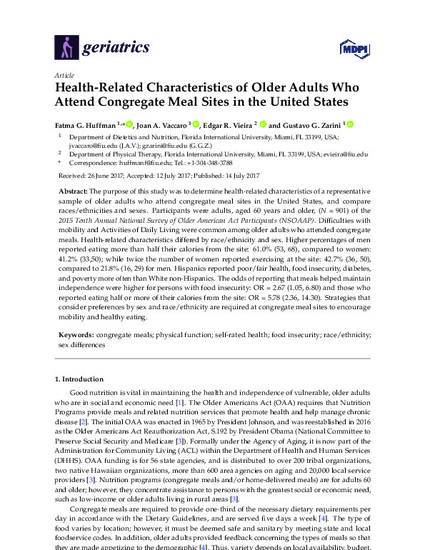
The purpose of this study was to determine health-related characteristics of a representative sample of older adults who attend congregate meal sites in the United States, and compare races/ethnicities and sexes. Participants were adults, aged 60 years and older, (N = 901) of the 2015 Tenth Annual National Survey of Older American Act Participants (NSOAAP). Difficulties with mobility and Activities of Daily Living were common among older adults who attended congregate meals. Health-related characteristics differed by race/ethnicity and sex. Higher percentages of men reported eating more than half their calories from the site: 61.0% (53, 68), compared to women: 41.2% (33,50); while twice the number of women reported exercising at the site: 42.7% (36, 50), compared to 21.8% (16, 29) for men. Hispanics reported poor/fair health, food insecurity, diabetes, and poverty more often than White non-Hispanics. The odds of reporting that meals helped maintain independence were higher for persons with food insecurity: OR = 2.67 (1.05, 6.80) and those who reported eating half or more of their calories from the site: OR = 5.78 (2.36, 14.30). Strategies that consider preferences by sex and race/ethnicity are required at congregate meal sites to encourage mobility and healthy eating.
